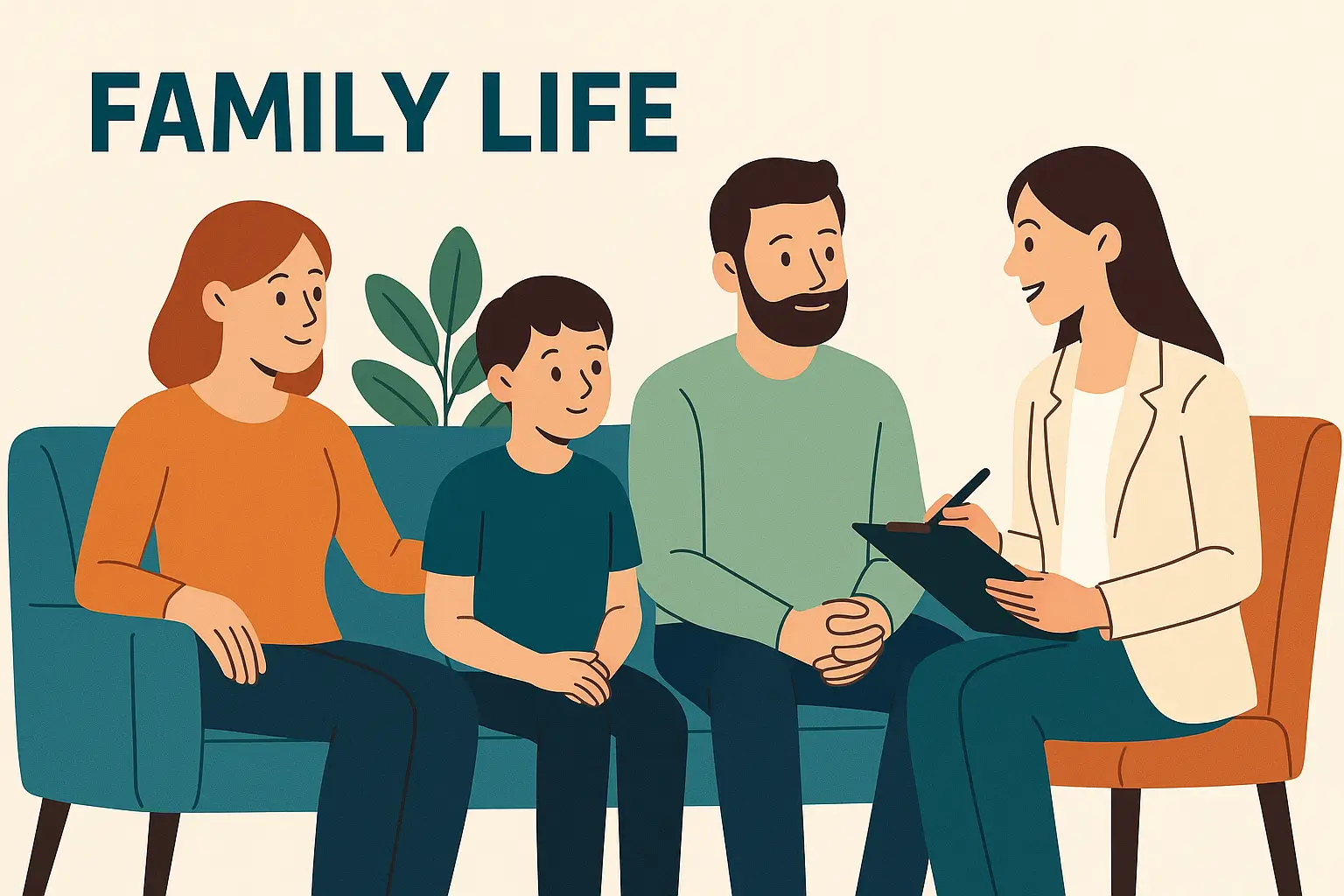What Is ABA Therapy? A Parent’s Guide to Understanding Applied Behavior Analysis
If you’re researching ABA therapy for the first time, you might be feeling a little overwhelmed. There’s a lot of information out there—some of it clinical, some of it confusing, and some of it contradictory.
Let’s break it down in plain terms. ABA therapy, or Applied Behavior Analysis, is a scientifically-backed approach that helps children with autism and other developmental differences learn new skills and reduce behaviors that get in the way of learning or daily life. It’s built on understanding how behavior works and using that knowledge to teach in ways that actually stick.
This guide will walk you through what ABA therapy is, how it works, who it helps, and what you can expect if you’re considering it for your child.
The Basics of ABA Therapy
Applied Behavior Analysis is a therapy based on the science of learning and behavior. It’s been around since the 1960s and has decades of research supporting its effectiveness. Today, it’s recognized as an evidence-based treatment by organizations like the U.S. Surgeon General and the American Psychological Association.
ABA is most commonly used to support children with autism spectrum disorder, but it can help anyone who needs support with communication, social skills, daily living tasks, or managing challenging behaviors.
At its core, ABA is about understanding why behaviors happen and using positive strategies to encourage helpful behaviors while reducing ones that interfere with learning or safety.
How ABA Therapy Works
ABA therapists look at behavior through a specific lens. They’re not just reacting to what a child does; they’re figuring out why it happens and what can change to support better outcomes.
The ABCs of Behavior
Every behavior has three parts:
Antecedent – What happens right before the behavior. Maybe your child is asked to put away their toys, or maybe they see another child playing with a toy they want.
Behavior – The action itself. Your child might throw the toy, walk away, or start crying.
Consequence – What happens right after. Do they get attention? Do they avoid the task? Understanding this helps therapists figure out what’s reinforcing the behavior.
By analyzing these three parts, therapists can identify patterns and design strategies that encourage positive behaviors instead.
Positive Reinforcement
This is the heart of modern ABA. When your child does something you want to encourage—like using words instead of grabbing, or sitting at the table during a meal—they receive something they find rewarding. It might be praise, a favorite toy, extra playtime, or a high-five.
The goal isn’t bribery. It’s teaching your child that certain behaviors lead to good outcomes, which makes them more likely to repeat those behaviors naturally over time.
Breaking Skills Into Small Steps
Big skills can feel overwhelming. ABA breaks them down into tiny, manageable pieces.
Take brushing teeth, for example. That’s not one skill—it’s a whole chain of actions. Picking up the toothbrush. Putting toothpaste on it. Bringing it to your mouth. Brushing the front teeth, then the back. Rinsing. Each step is taught and practiced until your child can do the whole routine independently.
Tracking Progress
ABA is an evidence-based approach, which means every decision is guided by data. Therapists collect information during every session to measure what’s working and what needs adjustment. This systematic tracking helps them make informed decisions about your child’s treatment and identify real progress as it happens.
ABA Therapy in Action: What It Actually Looks Like
ABA doesn’t happen in a sterile room with flashcards and drills. It’s woven into activities your child already enjoys.
A therapist might work on communication skills during playtime. If your child wants a toy car, the therapist might prompt them to say “car” or use a picture card before handing it over. Over time, your child learns that communicating gets them what they need.
For social skills, a session might involve playing a game that requires taking turns. The therapist guides your child through waiting, watching the other person’s turn, and then taking their own—all while keeping it fun and engaging.
Self-care routines like getting dressed or washing hands are taught step by step, with lots of practice and positive reinforcement. As your child masters each part, they gain independence and confidence.
Who Can Benefit from ABA Therapy?
ABA is most well-known for helping children with autism spectrum disorder, and research shows it can lead to meaningful improvements in communication, social interaction, and daily living skills.
But ABA isn’t only for young children with autism. It can support:
- Children with other developmental or intellectual disabilities
- Teens working on independence and life skills
- Adults learning to manage anxiety or build coping strategies
- Even seniors adjusting to cognitive or physical changes
The techniques are flexible and can be adapted to fit the needs of the individual, no matter their age or ability level.
The 7 Dimensions of ABA
If you’ve been reading about ABA, you might have come across the “7 dimensions.” These are the principles that guide high-quality ABA therapy. Here’s what they mean in everyday terms:
- Applied – The therapy focuses on behaviors that matter in real life, like communicating needs or playing with peers.
- Behavioral – It targets observable, measurable behaviors. Therapists work on what they can see and track, not abstract concepts.
- Analytic – Progress is measured with data. If something isn’t working, the approach is adjusted based on evidence.
- Technological – Techniques are clearly defined and described so they can be replicated. Another therapist should be able to follow the same steps and get similar results.
- Conceptually Systematic – The strategies are grounded in the science of behavior analysis, not random methods.
- Effective – The therapy produces meaningful, positive changes. If it’s not making a difference, it’s not good ABA.
- Generality – Skills learned in therapy carry over to other settings. A child who learns to request a snack in a session should also be able to do it at home or at school.
Common Misconceptions About ABA
ABA has evolved significantly over the years, and unfortunately, outdated ideas still linger.
Some people picture rigid, repetitive drills or a focus on making children “compliant.” That’s not what modern, ethical ABA looks like.
Today’s ABA is individualized, compassionate, and centered on helping each child build skills that improve their quality of life. It’s not about eliminating who a child is—it’s about giving them tools to communicate, connect, and navigate the world more independently.
Good ABA respects your child’s needs, interests, and pace. It uses positive reinforcement and play-based learning. And it involves you as a partner, not a bystander.
What to Expect in an ABA Session
Session Length and Frequency
ABA sessions vary depending on your child’s needs. Some children receive a few hours of therapy each week, while others benefit from more intensive programs with 20 to 40 hours per week. Sessions typically last anywhere from 2 to 4 hours, with breaks built in.
Who’s Involved?
A Board Certified Behavior Analyst (BCBA) designs your child’s treatment plan, sets goals, and oversees progress. They’re the ones with advanced training in behavior analysis.
Registered Behavior Technicians (RBTs) work directly with your child during sessions, implementing the strategies the BCBA has designed.
Your Role as a Parent
Parent involvement is a key part of how ABA works best. You spend more time with your child than anyone else, and we want to make sure you feel confident supporting their progress.
You’ll learn the same techniques the therapists use so you can reinforce your child’s skills during meals, bedtime, and playtime. You’ll have clear strategies that work, which means less guessing and more moments where you feel equipped to help your child grow.
United Care ABA’s Approach to ABA Therapy
At United Care ABA, the focus is on compassionate, family-centered care. Therapy isn’t one-size-fits-all. Every plan is tailored to your child’s strengths, challenges, and your family’s priorities.
Sessions happen wherever your child needs support—at home, in the community, or at school. The goal is to build skills that lead to greater independence and a better quality of life, not just check boxes on a treatment plan.
You’re involved every step of the way, learning strategies that work and gaining confidence in supporting your child’s growth.
Get Started with ABA Therapy at United Care ABA
If you’re wondering whether ABA therapy might help your child, the first step is simple: schedule a consultation. You’ll have a chance to ask questions, share your concerns, and learn what ABA could look like for your family.
From there, United Care ABA will conduct an assessment, verify your insurance coverage, and build a personalized treatment plan. Then therapy begins, and you’ll have a team supporting you and your child every step of the way.
Frequently Asked Questions About ABA Therapy
What does ABA do for autism?
ABA helps children with autism develop communication skills, social interaction, and self-care routines. It also reduces challenging behaviors by teaching more effective ways to meet needs and cope with frustration. The therapy is individualized, so goals are based on each child’s unique strengths and needs.
What are the 7 rules (or dimensions) of ABA?
The 7 dimensions of ABA are: Applied, Behavioral, Analytic, Technological, Conceptually Systematic, Effective, and Generality. These principles ensure that ABA therapy focuses on meaningful, observable behaviors, uses data to guide decisions, and produces lasting changes that carry over into real life.
What is an example of ABA therapy?
An example of ABA therapy might be teaching a child to request a snack using words or a picture card instead of crying or grabbing. The therapist prompts the child to communicate, rewards them when they do, and gradually fades the prompts until the child can request independently. Another example is breaking down handwashing into small steps and practicing each one until the child can complete the whole routine on their own.
What age is best for ABA therapy?
The best age to start ABA therapy is as early as possible, typically between ages 2 and 5. Early intervention takes advantage of young children’s brain flexibility and leads to the strongest outcomes. However, ABA can be effective at any age. Older children, teens, and even adults can benefit from ABA tailored to their needs.
What does ABA therapy look like at home?
ABA therapy at home looks like everyday life with intentional teaching moments. A therapist might work with your child during playtime, meals, or routines like getting dressed. You’ll also learn strategies to use throughout the day: prompting your child to communicate, reinforcing positive behaviors, and practicing skills in natural settings. Over time, therapy becomes part of how your family interacts.
How long is a typical ABA session?
A typical ABA session lasts between 2 and 4 hours, though this varies based on your child’s needs and treatment plan. Some children have shorter, more frequent sessions, while others participate in longer sessions several times per week. Sessions include breaks and are designed to keep your child engaged and motivated.



